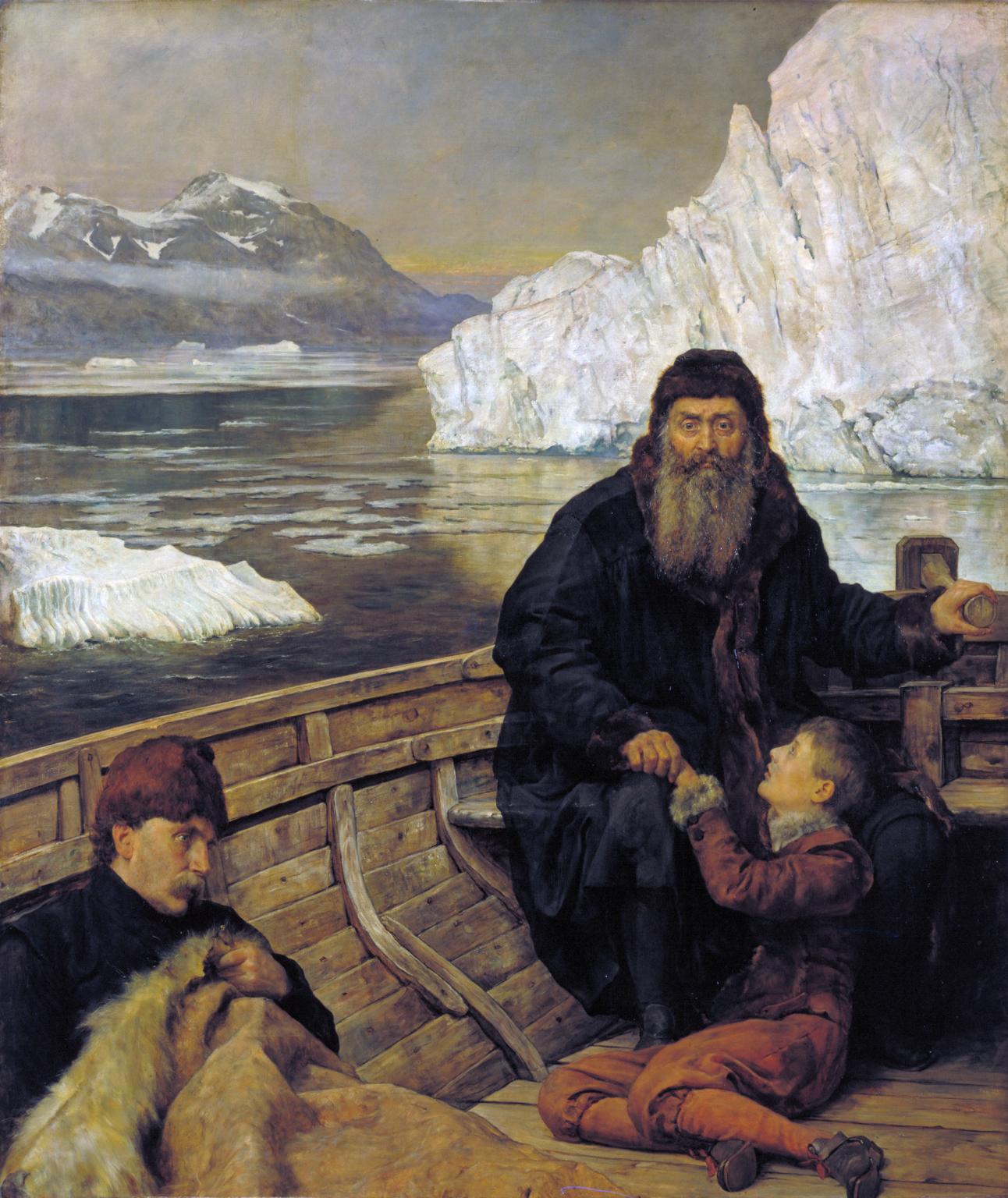 |
| The Halve Maen passing Hudson Highlands, 40X30, oil on canvas (also available in Giclée print) |
This painting is hanging in Sea and Sky: A Personal Journey, now through October 18 at Lakewatch Manor, 184 Lakeview Drive, Rockland, Maine (call 207-593-0722 for more information).
I painted it to commemorate the 400th anniversary of Henry Hudson’s 1609 voyage in the Halve Maen. He and a small crew of sixteen scurvy navvies sailed from Amsterdam to Newfoundland. From there they turned south, skimming along the Atlantic coast until they eventually made landfall at Cape Cod.
They then sailed to Chesapeake Bay, after which they worked their way north along the coast, poking into bays and inlets. Much of the Hudson River is a tidal estuary of brackish water, so Hudson and his crew must have been thrilled as they headed north, believing they had finally found the fabled Northwest Passage. They sailed up to modern-day Albany before realizing their mistake.
This was the beginning of the end for Henry Hudson (he would be set adrift in a James Bay ice field a mere two years later) but the beginning of European hegemony over what would eventually become New York.
 |
| The Last Voyage Of Henry Hudson, John Collier, 1881. I prefer to believe they made it to the south end of James Bay and walked back to habitable climes, stopping at a Tim Horton on the way. |
Had Hudson wandered just a few miles west, he would have come face-to-face with the New World’s greatest military power, the Iroquois Confederacy. It’s fun to speculate whether they would have squashed his small force like bugs, feted them, or merely ignored them.
As far as we know, however, they didn’t encounter the Mohawks. They might have seen the Mohicans near Albany, but I chose to represent them with Lenape men.
The Halve Maen itself is a mere speck in the painting. That tiny speck is the first inflamed node of the Black Plague, the first stomach twinge of a cholera epidemic. It was so small, and so inconsequential, but it represented the ultimate destruction of their Eden.
Hudson wasn’t the first European the natives had encountered; Albany had a French trading fort in 1540. Verrazzano had encountered the Lenape when he sailed in Hudson harbor in 1524. But these people were not the forerunners of colonists in the way Hudson was. The Dutch, English and Iroquois inexorably displaced the Lenape and Mohicans in the Hudson Valley. Where they failed, smallpox succeeded.
I turned the natives’ faces from the viewer because I don’t want to presume their reaction—probably because I have no idea what my own reaction would be. In making the boat so tiny, I was taking a page from Pieter Bruegel the Elder, who frequently put the significant action of his paintings in a corner of an otherwise panoramic canvas.
 |
| Headwaters of the Hudson (Lake Tear of the Clouds), 40X30, Oil on Canvas (Private Collection) |
I also painted Lake Tear of the Clouds (which is the headwater of the Hudson) for the same show. Although I used a misty Adirondacks highland setting for it, it is not in fact a pool in which a canoe would likely be abandoned. The canoe in the painting was inspired by one I saw in a tidal pool at the Passamaquoddy Pleasant Point Reservation near Eastport, Me. The connection between the Adirondacks and Maine is deep and not easily fathomed.
 |
| Pieter Bruegel the Elder’s Landscape with the Fall of Icarus, ca. 1590-95. Bruegel frequently put the significant action of his paintings in a corner of an otherwise panoramic canvas, and it’s an idea I love to borrow. |
Join us in October, 2013 at Lakewatch Manor—which is selling out fast—or let me know if you’re interested in painting with me in 2014. Click here for more information on my Maine workshops!









